Headlines and events archive
Displaying 51 - 100 of 1543
You may also find an archive of news published in the media which are related with the Instituto de Astrofísica de Andalucía - CSIC.
Pages

|
26/11/2024 - 28/11/2024
https://indico.iaa.csic.es/e/HighEnergyPulsars |

|
27/09/2024 - 12:30
Who Is Afraid of the Dark (Energy)? Cosmic acceleration dominates the behavior of the recent universe, with some fundamentally new physics at its heart. Recent data gives a tantalizing suggestion that the dark energy behind it is more complicated than a cosmological constant. Nevertheless, we do know a lot about how to describe dark energy behavior. Data within the next year has great promise to give further insight, and exciting new instruments are being planned. Dr. Eric Linder |

|
10/10/2024 - 12:30
Uncovering the magnetized path of massive star formation Both observational and theoretical studies suggest that the magnetic field plays an important role in the process of massive star and cluster formation. However, many open questions still remain, including the exact role of B-field at the different scales (from cloud to disk scales) and its importance compared to turbulence, feedback and self-gravity. Multi-scale studies of the morphology and strength of the magnetic field are thus crucial to... Dr. Chi Yan (Paul) Law |

|
17/10/2024 - 12:30
SO Colloquium: Radio eyes for the Sun, Heliosphere and Ionosphere: Status and plans for the SKAO era The Square Kilometre Array Observatory (SKAO) represents a monumental leap in radio astronomy technology, promising to redefine our understanding of the universe through its unprecedented capabilities. As we stand on the brink of the SKAO era, this talk aims to elucidate the transformative potential of SKAO for solar physics, heliospheric, and ionospheric research. The SKAO's advanced radio telescopes, with their superior angular, spectral, and... Dr. Pietro Zucca |

|
13/02/2025 - 12:30
SO Colloquium: Present and future of exoplanet research The search for new worlds in the Galaxy in the past three decades has been highly successful and the prospects for the next decade are even brighter. A succession of space missions and ground-based facilities defines a timeline extending well into the 2030s. Many advances on the planet discovery front will come from the PLATO mission, which will find long-period planets and even true Earth analogues, and from the many ongoing and future precise... Dr. Ignasi Ribas |

|
28/11/2024 - 12:30
SO Colloquium: Cosmic chemical evolution: here, there, and everywhere Metals play a very important role in star formation and stellar evolution. Amongst other things they control the cooling of the interstellar gas, thus allowing the formation of stars; they affect the radiation transport, through the opacities involved in the different microscopic processes; and they have the most important role in the dust formation and in the mass loss from stars. Metals are formed inside stars. Therefore, it is expected that... Profa. Ángeles Díaz |

|
26/09/2024 - 11:00
The stellar distribution in ultra-faint dwarf galaxies suggests deviations from the collisionless cold dark matter paradigm Unraveling the nature of dark matter (DM) stands as a primary objective in modern physics. I will present evidence suggesting deviations from the collisionless Cold DM (CDM) paradigm. In the standard cosmological model the dark matter (DM) particles are collisionless and, because of this very nature, they develop halos with the characteristic central cusp known as NFW profile. Real galaxies do not show NFW profiles but, rather, have a DM mass... Dr. Jorge Sánchez Almeida |
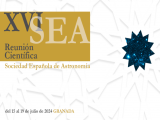
|
15/07/2024 - 19/07/2024
https://www.granadacongresos.com/sea2024 Granada |

|
04/11/2024 - 08/11/2024
https://indico.iaa.csic.es/event/16/ Granada |

|
24/09/2024 - 12:30
Constraining the Meteoroid Flux in the inner solar system The inner solar system is populated by Interplanetary Dust Particles (IDPs) released from cometary trails and collisions between asteroids. Planetary bodies and satellites therefore encounter a cloud of IDPs along their orbits, giving rise to a permanent bombardment on their respective atmospheres or surfaces. Constraining the magnitude of the mass influx of IDPs onto a solar system body is crucial for understanding the effects in their... Dr. Juan Diego Carrillo Sánchez |

|
23/07/2024 - 12:30
The QUIJOTE experiment: status, latest results and future plans I will review the current status and future plans of the QUIJOTE (Q-U-I JOint TEnerife) experiment, a project with the aim of characterising the polarisation of the Cosmic Microwave Background, and other galactic or extragalactic physical processes that emit in microwaves in the frequency range 10-42GHz, and at large angular scales (1 degree resolution). The project has two radio telescopes (2.25m primary aperture) and three instruments, MFI (10... Dr. José Alberto Rubiño Martín |

|
30/09/2024 - 13:00
High-Resolution Study of Blazar TXS 2013+370 and BEAM: A Space Technology and Research Student Team The talk will focus on two key areas. Part one will present the high-resolution imaging of Blazar TXS 2013+370, a study conducted as part of an M.Sc. thesis. This research aims to resolve the inner jet structure of the compact radio source TXS 2013+370 in total intensity and polarization. This analysis utilizes VLBA data combined with Effelsberg observations at frequencies of 22 GHz, 43 GHz, and 86 GHz. Part two will highlight BEAM, a student... Giorgos Michailidis |

|
20/06/2024 - 12:00
Mujer en la Ingeniería: Avances y Retos En esta conferencia presentaremos, en primer lugar, una panorámica de la situación actual de la mujer en las STEM y en particular en la ingeniería, tratando de analizar qué factores pueden tener una mayor influencia en la situación actual. A continuación trataremos brevemente la educación de la mujer en los dos últimos siglos. Destacaremos el hecho de como las formas de educar a la mujer están directamente relacionadas con el trabajo que... Dr. Laura Roa |

|
27/06/2024 - 12:30
Multiple components in the protostellar system HH 212: Infalling envelope, nested shell, MHD disk winds, and free wind gas I will present the Atacama Large Millimeter/submillimeter Array Band 7 observations at ~24 au spatial resolution of the CO (J=3-2) and H13CO molecular lines emission of the protostellar system HH 212 and compare them with the emission of the SiO (J=8-7) and SO (J=8-7) molecular lines. From the large to small scale, previous observations have detected the infalling envelope, CO outflow shell, SO disk wind, SiO expanding shell and jet in the... Dr. Alejandro López-Vázquez |

|
25/06/2024 - 11:00
Intersexionality, a key work for diversity? Since we are children we have been taught what we are and we learn how to fit into a set of infinite boxes. Each of these boxes defines us and, at the same time, can be used to discriminate against us, in life and at work. Diversity exists and it could be an advantage for our society. As scientists we should understand how to take care of diversity and use it to improve our work and life quality. One of the main problems in the past has been... Dr. Eleonora Fiorellino |

|
06/06/2024 - 12:30
A complex network perspective on Delta Scuti stars We apply horizontal visibility graphs (HVG) to study the complex network behavior for the delta Sct stars’ light curves observed by TESS. The delta Sct stars are pulsating stars with spectral types A0-F5 and intermediate masses between low-mass stars (≤ 1 Msun) and high-mass stars (≥ 2 Msun). They pulsate in low-order pressure modes and have dominant pulsation frequencies in the 5-80 d−1 range. The high amplitude delta Sct stars (called HADS),... Dr. Elham Ziaali |
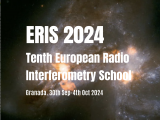
|
30/09/2024 - 04/10/2024
https://www.granadacongresos.com/eris2024 Granada |

|
23/04/2024 - 18/06/2024
https://indico.iaa.csic.es/event/15/ Granada |
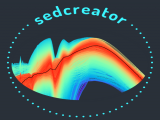
|
17/06/2024 - 18/06/2024
https://indico.iaa.csic.es/event/10/ Granada |
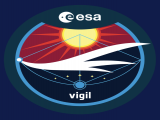
|
12/03/2024 - 15/03/2024
https://form.jotform.com/240521968228359 Granada |

|
11/07/2024 - 12:30
Dust in protoplanetary disks, (still) that great unknown Planetary systems are a side effect in the formation of a star. Planets are believed to be just simply the last remaining of dusty circumstellar disks which is formed around the protostar at very early stages. Thus, understanding how planets are formed requires to understand how dust evolve in these disks. It is less than ten years that we have the possibility of mapping the dust distribution in protoplanetary disks with great detail with... Carlos Carrasco González |

|
14/05/2024 - 12:30
New possibilities for atmospheric analysis with Monte Carlo In recent years, significant advancements have been made in scientific computing utilizing the Monte Carlo method, particularly at the intersection of two key communities: the heat transfer community and the computer graphics community. The first breakthrough is that the computation time required to solve radiative transfer becomes invariant, whether the ground is described by a single building or thousands of them, whether the 3D clouds are... Dr. Yannis Inouk Nyffenegger Péré |

|
30/04/2024 - 12:30
The art of astrophysical measurements: An elementary lecture on photon counting and S/N Have you ever dared to understand how many photons are detected by your camera when you are pointing the telescope to the sky? Is the action of the spectrograph fully understood when analyzing those photons? Do typical image formation rules hold when studying the polarization of light? All these are a few examples of questions addressed by researchers when designing instruments, which are later constrained by technological capabilities. This... Dr. José Carlos del Toro Iniesta |

|
11/04/2024 - 12:30
LP791-18d as a case study for outgassing rocky exoplanets Over the past three decades, the discovery of over five thousand exoplanets has opened avenues for atmospheric characterization, now feasible for a select subset through spectroscopic observations paired with Bayesian inference techniques. These exoplanetary atmospheres serve as crucial windows into planetary formation and evolutionary histories. Achieving accurate interpretations demands a comprehensive approach, advancing theory and modeling... Dr. Leonardos Gkouvelis |

|
04/04/2024 - 12:30
The Earthbound Fate of Meteor Phenomena Understanding meteor phenomena is essential for promptly and effectively recovering meteorites, predicting meteor showers, studying atmospheric properties, and assessing the threat posed by space objects to both in-orbit and ground-based infrastructure. By observing and interpreting meteor phenomena, we can predict impact consequences and efficiently locate and identify surviving meteorite fragments on the ground. Through dimensional analysis,... Dr. Maria Gritsevich |
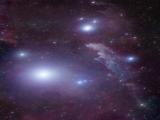
|
04/03/2024 - 05/03/2024
https://indico.iaa.csic.es/event/14/ Granada |

|
25/04/2024 - 12:30
Artificial Intelligence in Service of Galaxy Evolution Research: A Personal Journey In this seminar, I will present my personal exploration of the application of artificial intelligence in the study of galaxy evolution. Since the early 2010s, the fields of machine learning and deep learning have undergone unprecedented development, marked by enhancements in algorithms and hardware advancements. This progress has significantly influenced various scientific domains. Concurrently, the increasing volume and complexity of data... Dr. Ginés Martínez Solaeche |

|
27/02/2024 - 12:30
Unraveling the Gamma-ray emission in radiogalaxies and their jets Radio-galaxies are a minority among all extragalactic sources detected in gamma-rays, yet they have excellent potential to study particle acceleration and non-thermal emission in AGN jets. In contrast with blazars, which have jets aligned with the line-of-sight, radio-galaxies have a smaller Doppler boosting factors. The implications are important: First, the distance at which they are detectable in gamma-rays is smaller. Second, the thermal... Mireia Nievas Rosillo |

|
24/01/2024 - 24/01/2024
https://www.iaa.csic.es/meetings/cosmic-dust-workshop Granada |

|
21/05/2024 - 12:30
Coloquio SO: Spectroscopy's Role in Stellar Astrophysics To characterize a star, the stellar fundamental parameters such as mass, radius, metal abundance, and effective temperature should be known. Direct measurements of these parameters, especially for single stars, are quite challenging, and indirect methods are often employed to obtain these characteristics. The most effective method for determining these parameters is spectroscopy, which is an analysis technique of spectra. It allows us to... Dr. Filiz Kahraman Aliçavuş |

|
09/04/2024 - 12:30
Laboratory Research on the Atmospheric Impact of Spacecraft Re-entry Debris: Perspectives and Future Challenges The rapid growth of space debris, especially in Low Earth Orbit (LEO), poses a rising risk to both space operations and Earth's atmosphere. Debris fragments, even minuscule in size, can cause significant damage due to their high orbital speeds. To mitigate risks, controlled re-entry of debris is common practice, but this introduces a new concern: the increasing mass of human-made materials injected into the atmosphere. As satellites and rocket... Dr. Antonio Ocaña |

|
07/03/2024 - 12:30
SO colloquium: Stars and their close-by planets: clues of magnetic interactions Stars interact with their close-in planets through the gravitational and magnetic fields and with their radiation. After a general introduction to those interactions, I shall review some observational clues of magnetic star-planet interactions considering data obtained in the optical, X-ray, and radio domains. Based on a stellar force-free coronal field or the excitation of Alfven waves by an orbiting planet, some analytical models will be... Dr. Antonino Francesco Lanza |

|
21/03/2024 - 12:30
The Local Volume Mapper, state of the art The LVM, one of the three surveys that conform the SDSS-V project, is the first Integral Field Spectroscopy survey of the Local Group, including and unique mapping of the Milky Way. It started survey operations in October 2023, with some early science observations on cheery-peaked targets, and the first observations on the foreseen survey itself. I present here the status of the survey, including the state of the major contributions from the IA... Dr. Sebastián Sánchez |

|
14/03/2024 - 12:30
SO Colloquium: Spatially resolved spectroscopy properties of low-redshift galaxies We summarize here some of the results reviewed recently by Sanchez (2020) and Sanchez et al. (2021) comprising the advances in the comprehension of galaxies in the nearby universe based on integral field spectroscopic galaxy surveys. We review our current knowledge of the spatially resolved spectroscopic properties of low-redshift star-forming galaxies (and their retired counterparts) using results from the most recent optical integral field... Dr. Sebastián Sánchez |

|
19/02/2024 - 23/02/2024
https://indico.iaa.csic.es/event/11/ Granada |

|
19/03/2024 - 16:30
Recent Progress in Understanding Solar Flare Magnetism using Data-Driven Simulations and Statistical Analysis of Vector Magnetic Fields Continuous vector magnetic-field measurements by the Helioseismic and Magnetic Imager (HMI) onboard the Solar Dynamics Observatory (SDO) allowed us to run data-driven simulations of solar eruptions and perform statistical studies of magnetic-fields for many flares. In this talk I will review new aspects of flare magnetism discovered using SDO data, including progress in data-driven simulations and statistical studies of magnetic-reconnection... Dr. María Kazachenko |

|
07/05/2024 - 12:30
Journey into the Galactic Heart: Illuminating the Enigma of the Nuclear Star Cluster and the Nuclear Stellar Disc. The innermost regions of most galaxies are characterised by the presence of extremely dense nuclear star clusters, which sometimes appear together with larger stellar structures known as nuclear stellar discs. Understanding the relation between nuclear star clusters and nuclear stellar discs is challenging due to the large distance towards other galaxies which limits their analysis to integrated light. In this context, the Milky Way’s centre,... Francisco Nogueras Lara |

|
08/02/2024 - 12:30
The Transient High-Energy Sky and Early Universe Surveyor (THESEUS) The Transient HIgh-Energy Sky and Early Universe Surveyor (THESEUS) is a mission concept developed by a large European collaboration under study by ESA since 2018 and currently one of the three candidate M7 mission for a launch in mid '30s. THESEUS aims at fully exploiting Gamma-Ray Bursts for investigating the early Universe and as key phenomena for multi-messenger astrophysics. By providing an unprecedented combination of X-/gamma-ray... Dr. Lorenzo Amati |

|
18/01/2024 - 12:30
A Year Beyond the Horizon: Advancing Our Understanding of M87* with New EHT Observations. In this presentation, we introduce the first follow-up Event Horizon Telescope (EHT) observations of M87*, taken a year after the epoch-making first image. The enhanced imaging, facilitated by additional antennas, increased data rates, and new imaging techniques, not only provides greater detail but also enables us to study the dynamics of the black hole within a year. Due to the embargo, specific results are not included in this abstract, but... IAA-CSIC EHT group |

|
03/10/2024 - 12:30
SO Colloquium: The next generation of milliarcsecond surveys with SKA-VLBI Very Long Baseline Interferometry (VLBI), using both SKA-Low and SKA-Mid, is poised to deliver groundbreaking observations with milliarcsecond resolution, surpassing the capabilities of the standard SKA array. VLBI in conjunction with the SKA holds the promise of unlocking profound insights across various astrophysical topics and science working groups. VLBI with the SKA stands to revolutionise our understanding of galaxy evolution and the... Dr. Jack Radcliffe |

|
15/04/2024 - 12:30
Astronomy with Neutrino Telescopes In recent decades, high-energy neutrinos of astrophysical origin have become integral members of the multi-messenger astronomy community. Neutrino telescopes have a very particular way to observe the sky, with characteristics different from any other telescope. They are capable of continuously observing the entire sky simultaneously, yet they also necessitate the accumulation of a significant amount of statistical data. IceCube reported the... Agustín Sánchez Losa |

|
29/02/2024 - 12:30
SO Colloquium: Eyes on the Invisible: Charting New Horizons with the Event Horizon Telescope The Event Horizon Telescope (EHT) collaboration has captured the first-ever image of a black hole's event horizon in the galaxy M87, and more recently, in the supermassive black hole at the center of our Milky Way, SgrA*. These images, consistent with Kerr black holes as described by General Relativity, provide the strongest evidence to date for the existence of supermassive black holes in galaxy nuclei. Notably, the first polarization images of... Dr. Avery Broderick |

|
14/11/2023 - 15/11/2023
https://www.iaa.csic.es/noticias/meeting-light-pollution-challenges-and-response… Granada |

|
11/01/2024 - 12:30
MOSAIC: the high multiplex and multi-IFU spectrograph for the ELT MOSAIC is the planned multi-object spectrograph for the 39m Extremely Large Telescope (ELT). Conceived as a multi-purpose instrument, it offers both high multiplex and multi-IFU capabilities at a range of intermediate to high spectral resolving powers in the visible and the near-infrared. In this talk I will showcase the key science cases that drive the top-level requirements and the adopted instrument architecture. With a planned first light in... Dr Ruben Sanchez-Janssen |

|
24/10/2023 - 25/10/2023
https://www.iaa.csic.es/meetings/andes-technical-meeting Granada |

|
23/10/2023 - 24/10/2023
https://www.granadacongresos.com/100xciencia7 Granada |
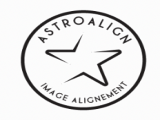
|
14/10/2023 - 14/10/2023
https://indico.iaa.csic.es/event/8/ On line |

|
25/01/2024 - 12:30
Stellar population studies in the J-PAS survey The Javalambre Physics of the Accelerating Universe Astrophysical Survey (J-PAS) is a large scale multi-filter survey that has started to observe 8500 deg² of the northern sky with 54 narrow-band filters in the optical range (3500-9600Å). In our Galaxy Evolution group at IAA-CSIC, we aimed at developing and testing methodologies in order to perform stellar populations studies using this kind of data. More precisely, I will introduce our SED-... Dr. Luis Alberto Díaz García |

|
19/12/2023 - 12:30
Fundamental Physics From Ground-Based Gamma-Rays Observations Crucial topics in fundamental physics, such as the existence of new particles, or violations of the Lorentz Invariance arising at the Planck scale, can be effectively tackled in the cosmic environment, by means of ground-based observations in the VHE gamma-ray band. This includes both Particle showers detectors, such as LHAASO and Imaging Atmospheric Cherenkov Telescopes, such as MAGIC, H.E.S.S., or the forthcoming CTA and ASTRI Mini-Array. I... Dr. Giacomo Bonnoli |
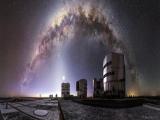
|
02/10/2023 - 02/10/2023
https://indico.iaa.csic.es/event/7/ Granada |